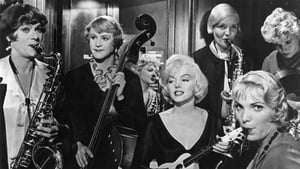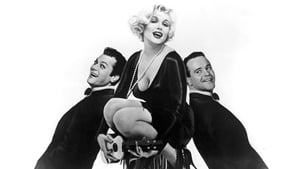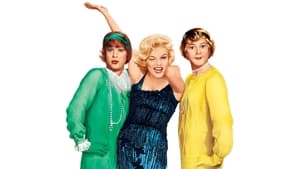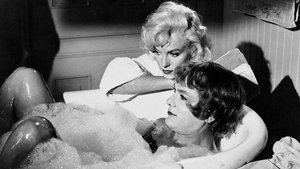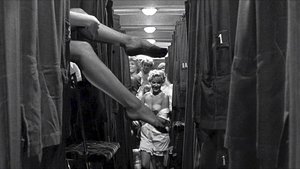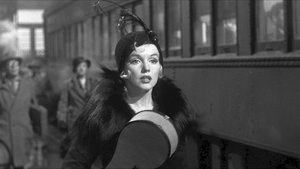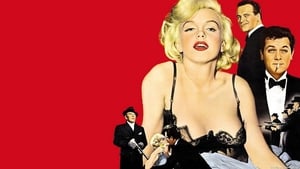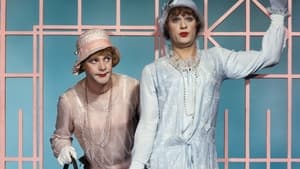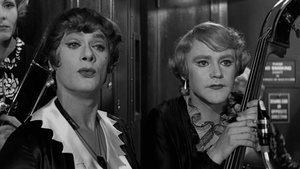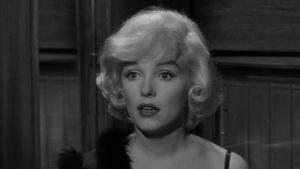Contact: [email protected]
Video Sources 0 Views
- Some Like It Hot Colorized


Synopsis
[ez-toc]








Introduction
In the annals of old films, few comedies have stood the test of time quite like “Some Like It Hot Colorized,” a 1959 gem directed by the legendary Billy Wilder. The film has not only earned its place in cinematic history but has recently undergone a fascinating transformation with the release of a colorized version.
This article delves into the magic of “Some Like It Hot Colorized,” examining its storytelling mastery, its successful recreation of the Prohibition Era, the evolution from black and white to color, the pulsating Jazz Age soundtrack, and the challenges faced in preserving this cinematic masterpiece. Join us as we explore the enduring legacy of the film and the unique experience of viewing it in its newly colorized form.
Read Media File Transfer Agreement: Terms and Conditions
Read FAQ
The Timeless Appeal of “Some Like It Hot Colorized”
“Some Like It Hot Colorized” has etched its place in the hearts of audiences as a timeless comedy classic. The recent release of a colorized version has sparked renewed interest and debate among fans and critics alike. Purists may argue that tampering with the original black and white aesthetic diminishes the artistic integrity of the film. Still, others welcome the opportunity to experience the iconic tale in a fresh, vibrant light.
Embracing Change: The Colorized Version
The decision to colorize “Some Like It Hot Colorized” raises questions about the delicate balance between preserving the original vision and embracing modern technology. While some cinephiles advocate for the purity of black and white cinematography, others see colorization as a gateway to introduce classic films to new generations.
A Divisive Debate
The reception of the colorized version has been mixed, with purists expressing reservations about altering the intended viewing experience. Yet, for a new generation raised on technicolor spectacles, the colorized edition offers a chance to connect with the past in a more relatable way. As a film reviewer, my initial skepticism gave way to curiosity, leading me to explore the colorized rendition with an open mind.
Personal Insights: Watching “Some Like It Hot” in Color
As the opening credits rolled, the vibrant hues burst forth, breathing new life into familiar scenes. Marilyn Monroe’s radiant presence, the suave charm of Tony Curtis, and Jack Lemmon’s comedic brilliance seemed to leap off the screen with renewed energy. While some may argue that the original black and white cinematography added a certain timeless elegance, the colorized version brought a sense of immediacy and connection to the characters.
1. The Storytelling Mastery of Billy Wilder
“At the end of some films, you leave the theater and forget it. With a good comedy, you leave the theater and remember it.” – Billy Wilder. This sentiment perfectly encapsulates the enduring charm of “Some Like It Hot Colorized.” Billy Wilder, a maestro of storytelling, crafted a narrative that seamlessly blended humor, romance, and suspense.
The Plot Unveiled
“Some Like It Hot Colorized” revolves around two musicians, Joe (Tony Curtis) and Jerry (Jack Lemmon), who witness a mob hit in Prohibition-era Chicago. To escape the mobsters, they disguise themselves as women and join an all-female band, where they encounter the vivacious and unsuspecting Sugar Kane, played by the iconic Marilyn Monroe. The ensuing comedic chaos, mistaken identities, and romantic entanglements form the backbone of the plot.
The Triumvirate of Talent
The film’s success hinges on the impeccable performances of its lead actors. Marilyn Monroe’s portrayal of Sugar Kane remains a highlight, capturing the essence of vulnerability and sensuality. Tony Curtis and Jack Lemmon, in their cross-dressing escapades, deliver a masterclass in physical comedy. Wilder’s direction allows each character to shine, creating a harmonious ensemble that elevates the comedic brilliance of the narrative.
2. Capturing the Spirit of the Prohibition Era
“Some Like It Hot Colorized” transports audiences to the bygone era of the Prohibition, where speakeasies thrived, and the Chicago mafia reigned supreme. Despite being filmed in 1959, Wilder’s meticulous attention to detail and set design effectively recreates the atmosphere of the 1920s.
The Chicago Mafia: Driving the Conflict
The film’s narrative is intricately tied to the Chicago mafia, led by the menacing Spats Colombo. The looming threat of mobsters adds a layer of suspense to the comedic proceedings, creating a unique blend of genres. Wilder’s ability to weave a compelling story within the backdrop of Prohibition-era chaos showcases his versatility as a filmmaker.
3. The Artistry of Visual Design: From Black and White to Color
One cannot discuss “Some Like It Hot Colorized” without delving into the creative choices that define its visual identity. The use of cross-dressing as a comedic device adds an extra layer of hilarity, challenging societal norms with wit and charm.
Cross-Dressing Comedy: Breaking Barriers
Wilder’s decision to incorporate cross-dressing into the narrative was a bold choice for its time. The film delicately navigates the comedic potential of the characters’ disguises while avoiding mockery or insensitivity. This thematic element not only adds to the humor but also serves as a commentary on gender roles and societal expectations.
The I.A.L. Diamond Touch
Screenwriter I.A.L. Diamond collaborated with Wilder to create a script that seamlessly blended humor and social commentary. Diamond’s contribution to the film’s success lies in his ability to infuse wit and intelligence into the dialogue, elevating the comedic moments while maintaining a deeper subtext.
4. The Rhythms That Move Us: Exploring the Jazz Age Soundtrack
The Jazz Age comes alive in “Some Like It Hot Colorized” through the vibrant soundtrack provided by the fictional band, Sweet Sue and Her Society Syncopators. The energetic jazz score not only complements the on-screen chaos but also becomes an integral part of the film’s identity.
Sweet Sue and Her Society Syncopators
The fictional band within the film serves as a catalyst for many of the plot’s comedic situations. The infectious energy of the jazz performances, coupled with the characters’ interactions, creates a lively atmosphere that keeps the audience engaged. The soundtrack not only enhances the comedic elements but also reflects the spirit of the Jazz Age.
Preserving a Masterpiece: Overcoming Challenges in Restoring “Some Like It Hot Colorized”
The journey from black and white to color presented unique challenges in preserving the integrity of “Some Like It Hot Colorized.” Behind the scenes, the film faced hurdles that went beyond the technical aspects of colorization.
Marilyn Monroe’s Struggles: A Behind-the-Scenes Tale
While Monroe’s on-screen presence dazzled audiences, her personal struggles off-screen were less glamorous. The challenges faced by Monroe during the production of “Some Like It Hot Colorized” add a layer of poignancy to her performance. Despite personal turmoil, Monroe delivered a memorable portrayal, showcasing her resilience as an actress.
The Black and White Legacy
The original black and white version of “Some Like It Hot Colorized” remains a testament to the era’s filmmaking aesthetics. The contrast, shadows, and visual nuances captured in monochrome contribute to the film’s enduring appeal. Preserving this version is crucial for future generations to appreciate the artistry of classic cinema.
The Enduring Legacy of “Some Like It Hot Colorized”
Six decades after its release, “Some Like It Hot Colorized” continues to resonate with audiences, solidifying its status as a classic. The film’s impact extends beyond the silver screen, leaving an indelible mark on popular culture.
Hollywood Favorite Movie Lines
“Some Like It Hot Colorized” has gifted the world with one of the most iconic lines in cinematic history: “Well, nobody’s perfect.” This timeless quip, delivered with impeccable timing, encapsulates the film’s irreverent humor and has become a staple in discussions of classic cinema.
Contributions to Popular Culture
The film’s influence extends far beyond its initial release. References to “Some Like It Hot” can be found in various forms of media, from television shows to contemporary films. Its enduring popularity speaks to the universal themes of love, identity, and the absurdity of life that resonate across generations.
Embracing the Old and the New: Appreciating Both Versions of “Some Like It Hot”
As we navigate the debate surrounding the colorized version, it’s essential to appreciate “Some Like It Hot” in both its original black and white form and its newly vibrant incarnation.
The Colorized 1959 Version: A Fresh Perspective
While purists may resist the allure of colorization, the new version offers a fresh perspective for those seeking a contemporary viewing experience. The colorized edition breathes new life into the classic, making it accessible to a broader audience.
The Original Black and White Version: Timeless Elegance
For those who cherish the authenticity of the original, the black and white version remains a testament to the craftsmanship of a bygone era. The monochrome aesthetic captures the nuances of Wilder’s direction and the performances of the iconic cast.
In Conclusion
“Some Like It Hot Colorized 1959” stands as a testament to the enduring power of American cinema. Billy Wilder’s storytelling brilliance, coupled with the unforgettable performances of Marilyn Monroe, Tony Curtis, and Jack Lemmon, has left an indelible mark on film history. Whether experienced in its original black and white glory or the newly colorized rendition, the film continues to captivate audiences, bridging the gap between the old and the new. As we celebrate the cultural significance of “Some Like It Hot,” let us embrace the rich tapestry of cinema, appreciating the timeless themes and impeccable craftsmanship that define this cinematic masterpiece.
